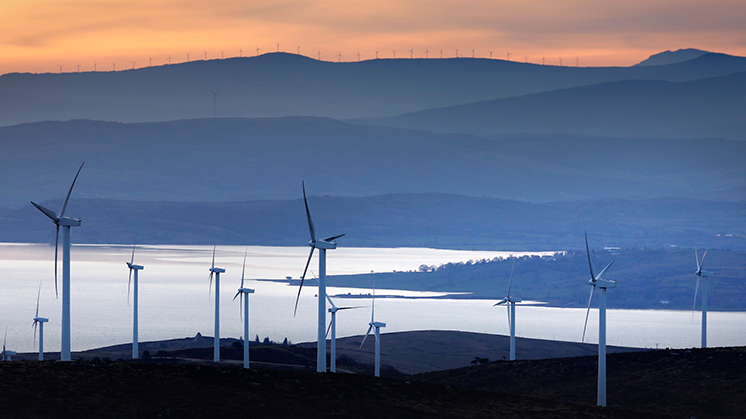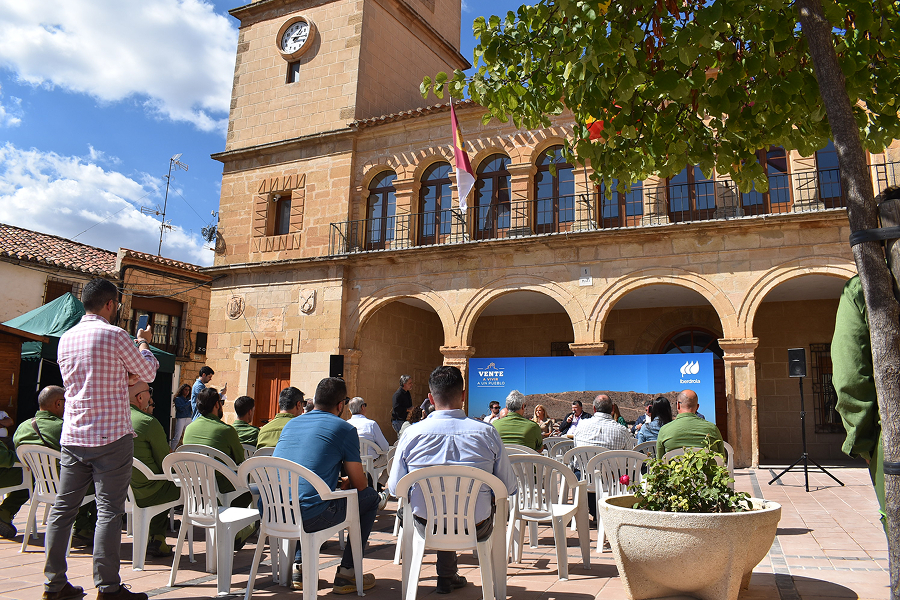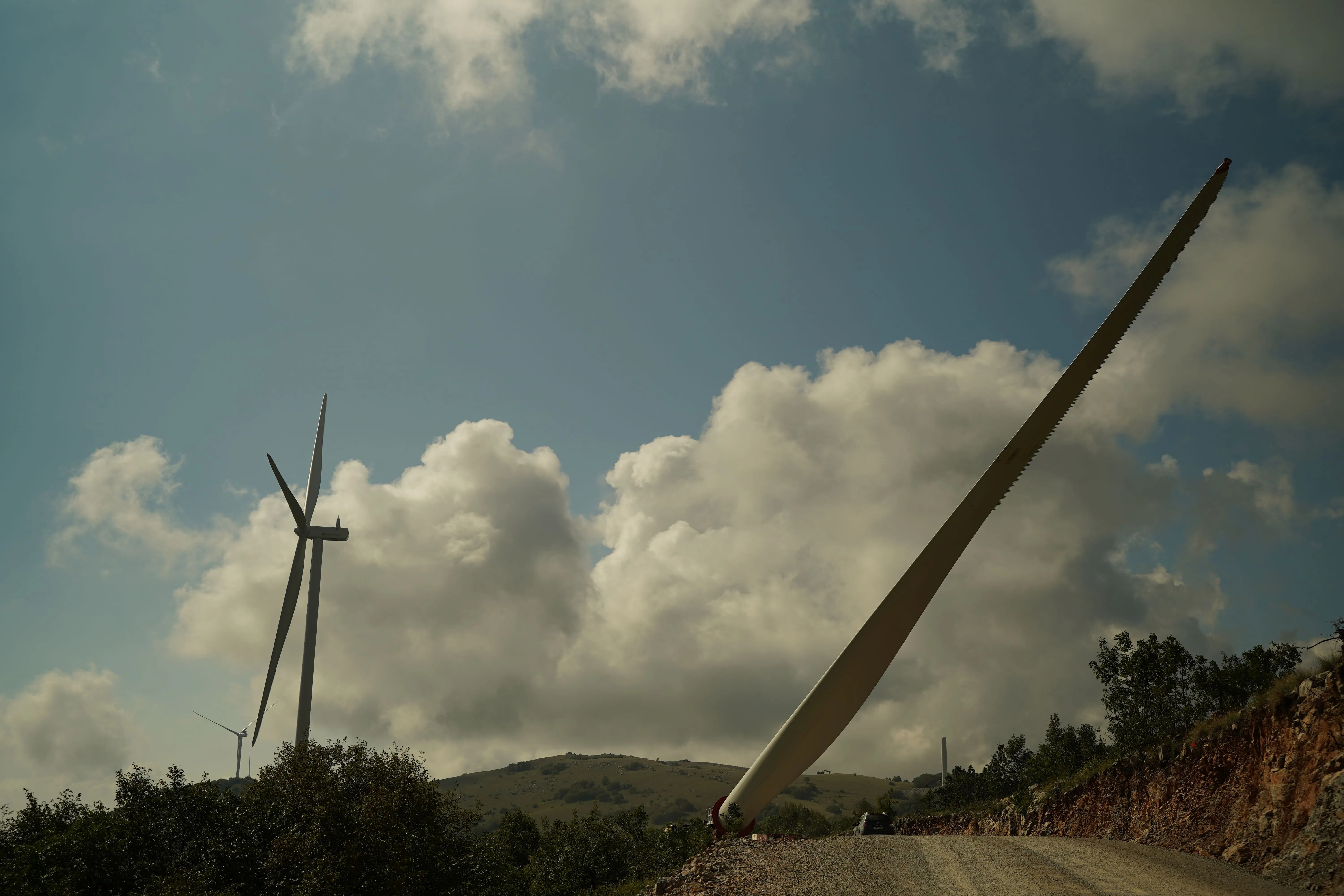The President of Cantabria assures that Iberdrola España’s El Escudo wind farm is “a symbol of progress”
- The president visits the works of this project, which, with an investment of €120 million by Biocantaber, puts an end to the “wind energy paralysis” in the region
- She assures that wind energy development is “unstoppable” and highlights that six more wind farms are in progress, with an investment of €300 million
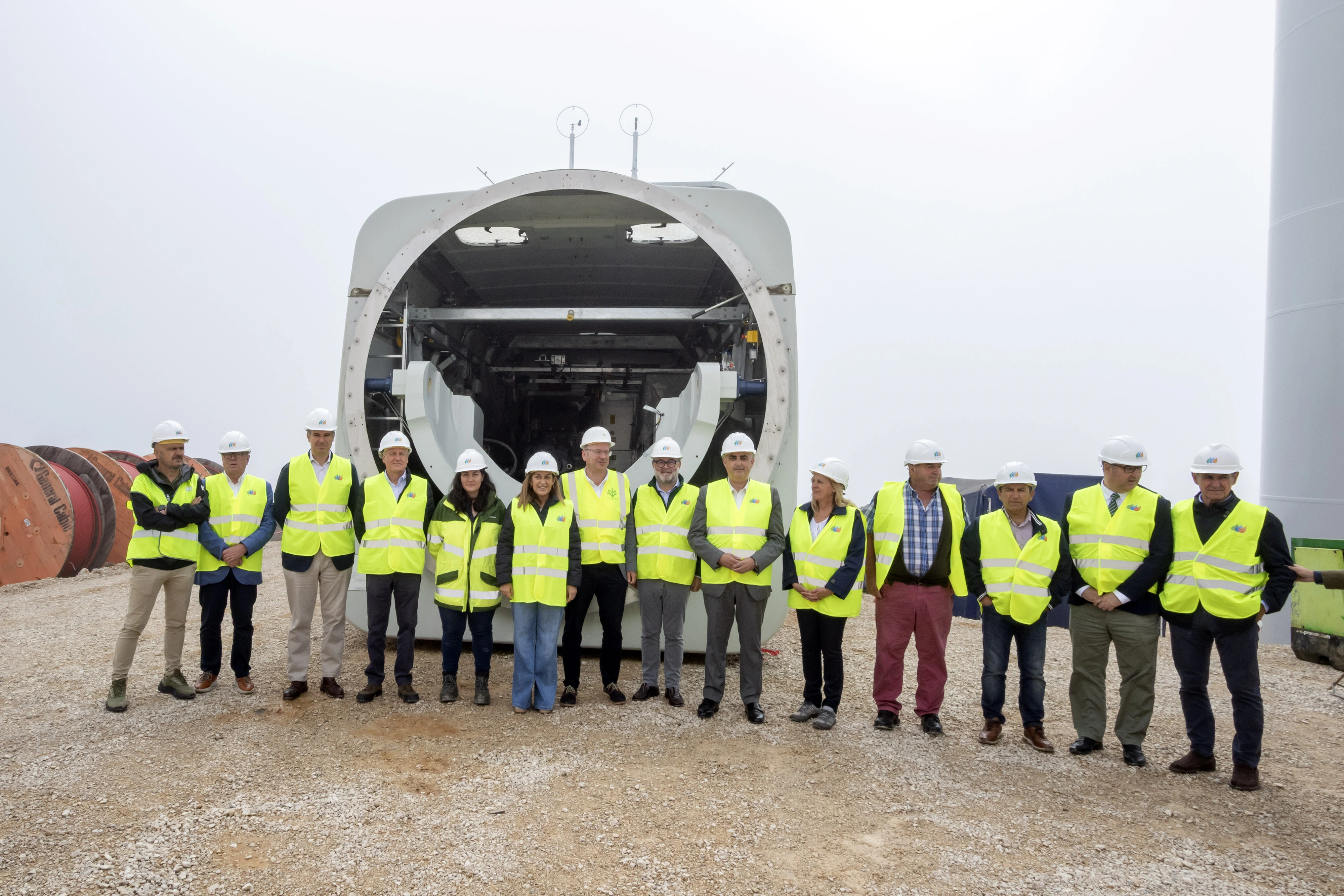
Visit of the President of Cantabria, María José Sáenz de Buruaga, to the El Escudo wind farm in Cantabria
The President of Cantabria, María José Sáenz de Buruaga, stated today that the El Escudo wind farm is “a symbol of progress, sustainability, respect for the environment and the people who live in it, and above all, of the future.” This project, with a budget of €120 million, represents one of the largest business investments in the region and is set to mark “a before and after” in our energy development.
Buruaga made this statement after visiting the construction works of this facility, promoted by Biocantaber – a company jointly owned by Iberdrola España, Ocyener, and Santander Green Investment SL (Banco Santander) – which, according to her, ends the “wind energy paralysis” in Cantabria and represents a step forward in the energy transition model being driven by her government.
And it is with a “model park” that will have a relative performance 50% higher than the national average (the highest in Spain), producing 8% of the electricity consumed in Cantabria and able to meet the demand of more than 80,000 homes, with 23 wind turbines and a capacity of 96.6 megawatts.
“Today is a great day,” the president affirmed, first thanking Iberdrola España for not giving up and for keeping faith in driving forward an initiative that has had to overcome a “path full of difficulties, with a somewhat Don Quixote-like epic,” drawing a comparison with the windmills turned into giants in Cervantes’ famous work.
María José Sáenz de Buruaga was accompanied on the visit by the councillors for Industry, Eduardo Arasti; for Development, Roberto Media; and for Rural Development, María Jesús Susinos; the mayors of Campoo de Yuso, Eduardo Ortiz; of Luena, José Ángel Ruiz; of Molledo, Joaquín Villegas; and of San Miguel de Aguayo, Eduardo Gutiérrez; and the CEO of Iberdrola Energía Sostenible España, Julio Castro, among other company representatives.
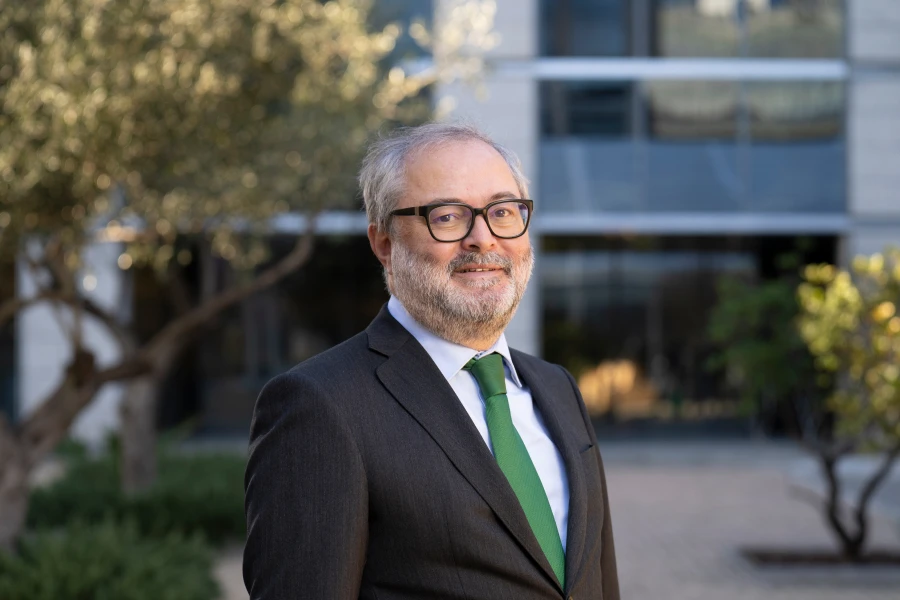
Julio Castro, CEO of Iberdrola Energía Sostenible España, emphasised that “for Iberdrola España, it is very important to anchor ourselves to our regions. Renewable energy is an opportunity for the future economic and social development of many areas of Spain to jump on the train of an increasingly greener, renewable, and electrified Europe. And this project in Cantabria is an example. The project will have an important local component, contributing to the dynamisation of the economy and employment in the area. Industrial suppliers will participate in its development, and up to 210 people will work during peak periods until its planned commissioning by the end of 2025. Cantabria can and must lead renewable energy.”
For his part, Agustín Valcarce, responsible for the Cantabrian company Ocyener and a partner in the project, added that “wind farms are the main contributors to the depopulated areas of Spain, providing tax revenues and developing social projects for local residents, in order to establish a balanced model of coexistence with the environment and to significantly contribute to the settlement of the population in the territory.”
The President of Cantabria highlighted the project’s benefits for the region, not only in terms of clean and affordable energy for the people of Cantabria but also in terms of activity, employment, and income for local councils and neighbourhood boards, amounting to more than €4.7 million to date.
She also added that, for the first time in Spain, this wind farm will enable a reduced electricity tariff and a significant reduction in electricity bills for customers living in the municipalities where the park is located, which are Campoo de Yuso, Luena, Molledo, and San Miguel de Aguayo.
“Unstoppable” wind energy development in Cantabria
María José Sáenz de Buruaga assured that wind energy development in Cantabria is an “unstoppable reality” thanks to her government’s commitment to deploy renewables “with order, rationality, and common sense,” respecting the law and minimising impacts.
The president lamented that the region produces only 15% of the energy it consumes, a situation that must be reversed, as it is far from the goal of installing 700 megawatts of wind energy by 2030. As she emphasised, Cantabria has been “stuck” at 35.3 megawatts since the opening of the Cañoneras park in Soba, 17 years ago.
That is why she reminded everyone that the government currently has six more wind farms in progress: one under state processing (Bustasur) and five under regional processing (Somaloma-Las Quemadas, Campo Alto, La Costana, Cuesta Mayor, and Alsa).
Buruaga is confident that all of them will be under construction in this legislature, leading to an investment of €300 million and the creation of 400 jobs annually during the construction phase, with another 80 jobs in the operation phase, according to the Cantabria Wind Energy Association.
She also announced that there are another six regional wind farms that are in the environmental evaluation process.
In total, all these wind energy projects will add a capacity of 453 megawatts.
For Buruaga, Cantabria’s energy policy “cannot become an ideological battle or a battleground for confrontation”; instead, it must be addressed as a “regional policy” to attract investment and enhance the competitiveness of the industrial fabric.
And she made it clear that, for the government she leads, socio-economic development and environmental protection are not incompatible, but complementary. “We say yes to wind energy development, but not everywhere, not in any way, and not at any price. Wind turbines are not a threat, they are an opportunity,” she emphasised.
Finally, she again called on the Spanish government to invest in improving energy transport and distribution networks and to unblock strategic projects such as the expansion of the Aguayo Hydroelectric Power Station. In this regard, she explained that if the 1-gigawatt expansion and the 700 megawatts of wind energy had already been implemented, Cantabria would have eliminated its energy generation deficit in 2024 and would have a surplus of 26%.
